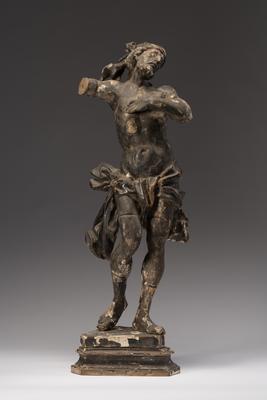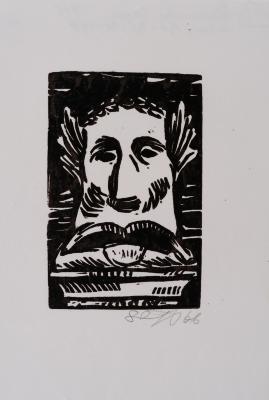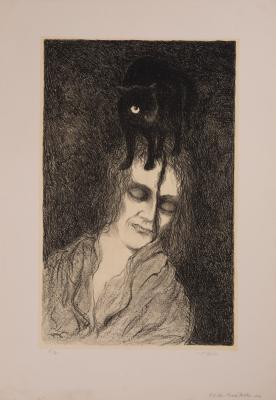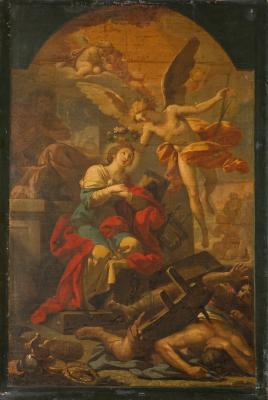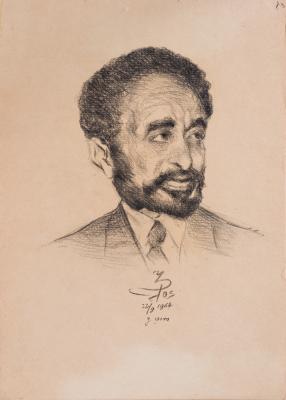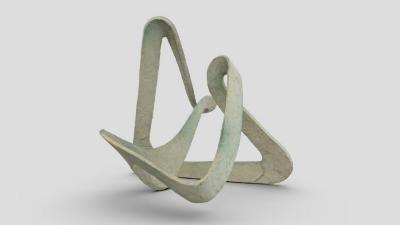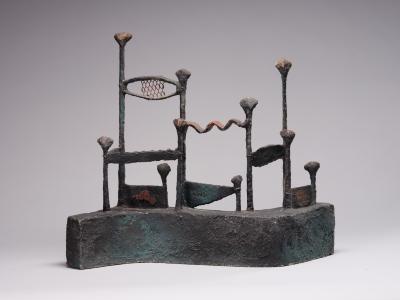The first great work by Mykhailo Boichuk performed in Lviv was the paintings of the chapel of St. John the Baptist (in the premises of the former seminary for clerks). The seminary was a foundation of Metropolitan Andrey Sheptytsky. Of particular interest is the altar composition “The Last Supper”, which is housed in the Andrey Sheptytsky National Museum in Lviv. The sketches for the mural painting “The Last Supper” completely correspond to the composition of the same name icon. Boichuk used the reverse perspective and the associated conditionalism in the means of depicting. The connection with the Byzantine tradition is observed not only in the perspective system but also at the semantic level, when Christ, the most important figure, is depicted greater than other characters. In the composition of the mural painting “The Last Supper”, Boichuk skillfully used the shape of the wall (the arch); this motif of the arch is repeated in the outline of the table, concept of emplotment, as well as in the placement of Christ and the apostles. In Boichuk's works, the plot itself acquires the Eucharistic meaning; in the setting of the table, of particular significance are a sufficiently large chalice with wine and altar breads as symbols of Christ's blood and body; the small altar breads arranged in a semicircle create exactly the "rhythm of rhythm", which is one of the stylistic features of Boichuk, forming an association of his creative work with modernism. The chalice with wine fixes the vertical axis of the composition at the bottom, emphasizing its center with the image of Christ and St. John, who leaned on the table and clung to the Teacher. The artist almost avoided the gestures in the image. The apostles sit very close to each other; their hands are hidden. Only the blessing hand of Christ with his three fingers clenched together for the sign of the cross lies on the table. The tension manifests itself not only in the position of the characters, but also in the rhythm of the halos, which are depicted as if they are moving on both sides to the center, to the figure of Christ. Only Judas doesn’t have a halo.







